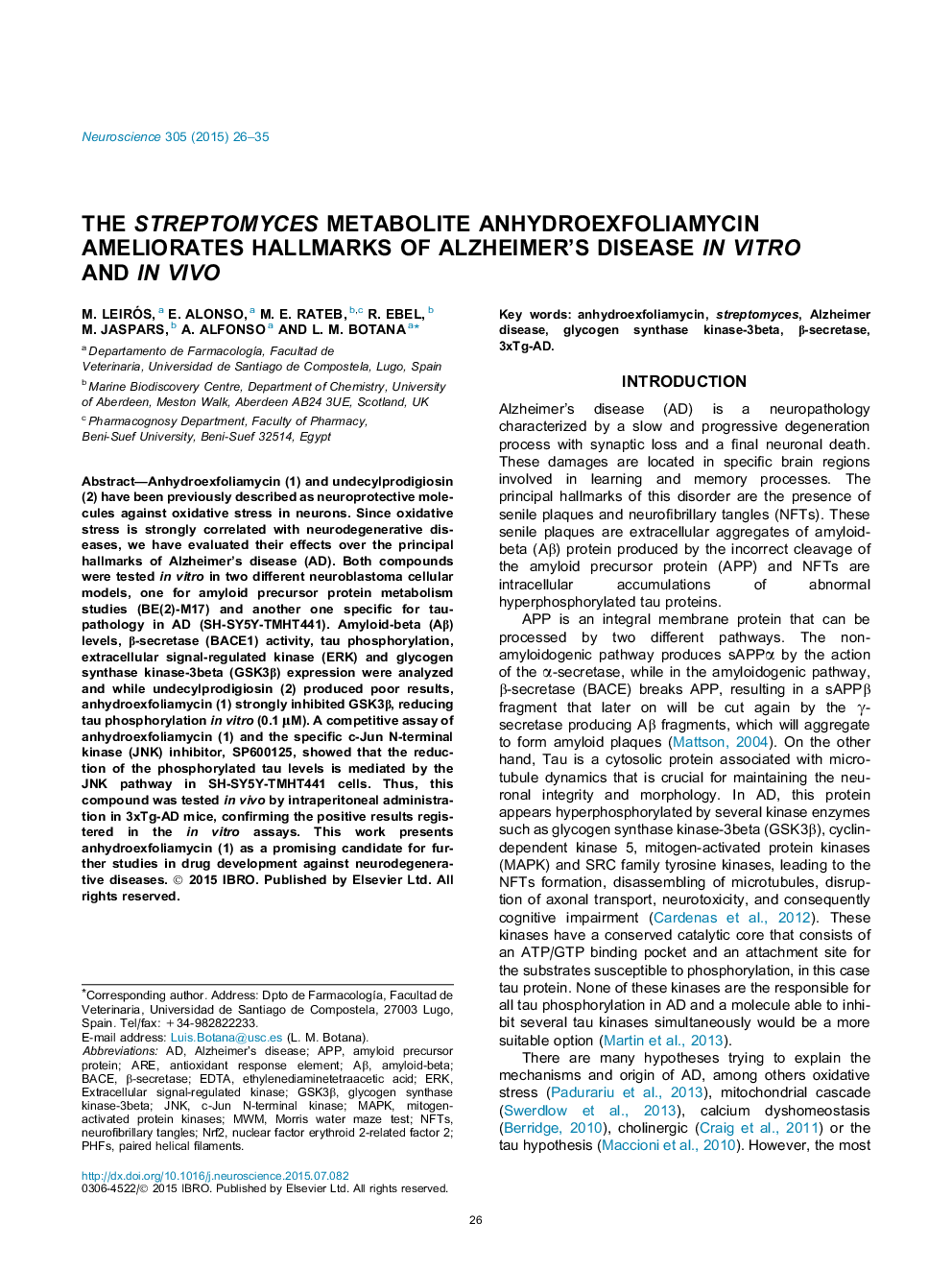| کد مقاله | کد نشریه | سال انتشار | مقاله انگلیسی | نسخه تمام متن |
|---|---|---|---|---|
| 6272258 | 1614771 | 2015 | 10 صفحه PDF | دانلود رایگان |

- Anhydroexfoliamycin (1) and undecylprodigiosin produce in vitro BACE1 inhibition.
- 1 reduces tau phosphorylation in vitro through the inhibition of GSK3β and JNK.
- The chronic treatment of 3xTg-AD mice with 1 produces a reduction of Aβ42 levels.
- In vivo assays confirm in vitro results and 1 reduces phosphorylated tau levels.
- GSK3β is inhibited by 1 in brains lysates of 3xTg-AD mice.
Anhydroexfoliamycin (1) and undecylprodigiosin (2) have been previously described as neuroprotective molecules against oxidative stress in neurons. Since oxidative stress is strongly correlated with neurodegenerative diseases, we have evaluated their effects over the principal hallmarks of Alzheimer's disease (AD). Both compounds were tested in vitro in two different neuroblastoma cellular models, one for amyloid precursor protein metabolism studies (BE(2)-M17) and another one specific for taupathology in AD (SH-SY5Y-TMHT441). Amyloid-beta (Aβ) levels, β-secretase (BACE1) activity, tau phosphorylation, extracellular signal-regulated kinase (ERK) and glycogen synthase kinase-3beta (GSK3β) expression were analyzed and while undecylprodigiosin (2) produced poor results, anhydroexfoliamycin (1) strongly inhibited GSK3β, reducing tau phosphorylation in vitro (0.1 μM). A competitive assay of anhydroexfoliamycin (1) and the specific c-Jun N-terminal kinase (JNK) inhibitor, SP600125, showed that the reduction of the phosphorylated tau levels is mediated by the JNK pathway in SH-SY5Y-TMHT441 cells. Thus, this compound was tested in vivo by intraperitoneal administration in 3xTg-AD mice, confirming the positive results registered in the in vitro assays. This work presents anhydroexfoliamycin (1) as a promising candidate for further studies in drug development against neurodegenerative diseases.
109
Journal: Neuroscience - Volume 305, 1 October 2015, Pages 26-35